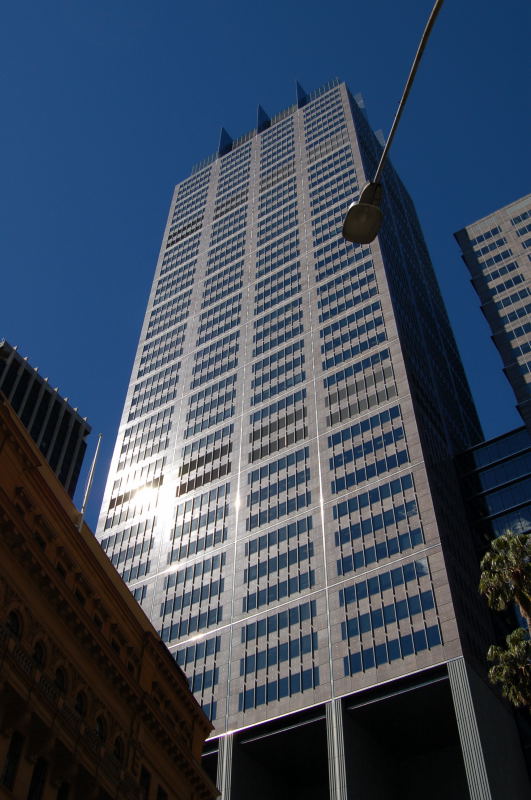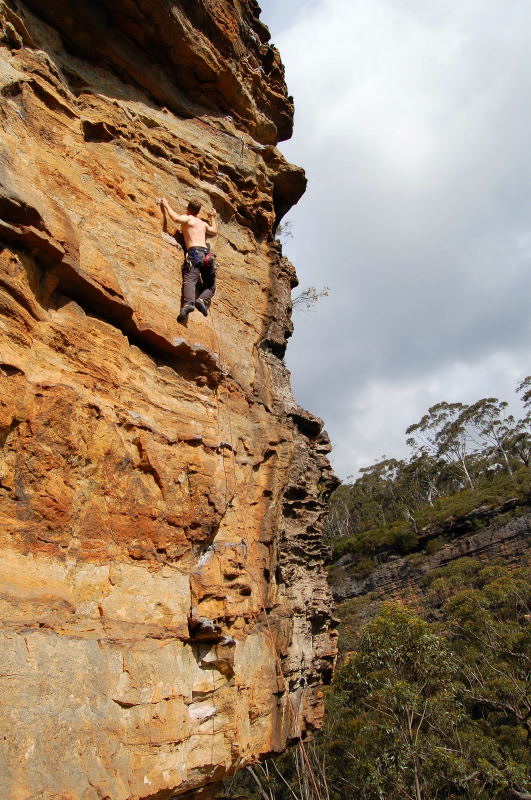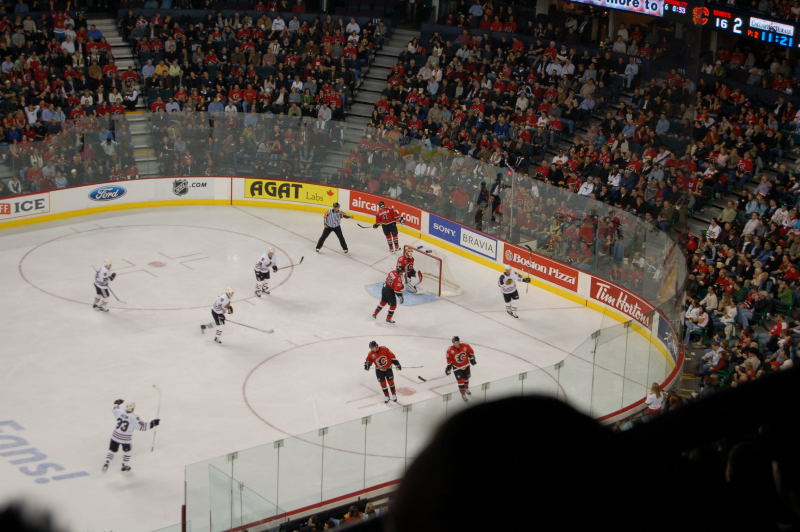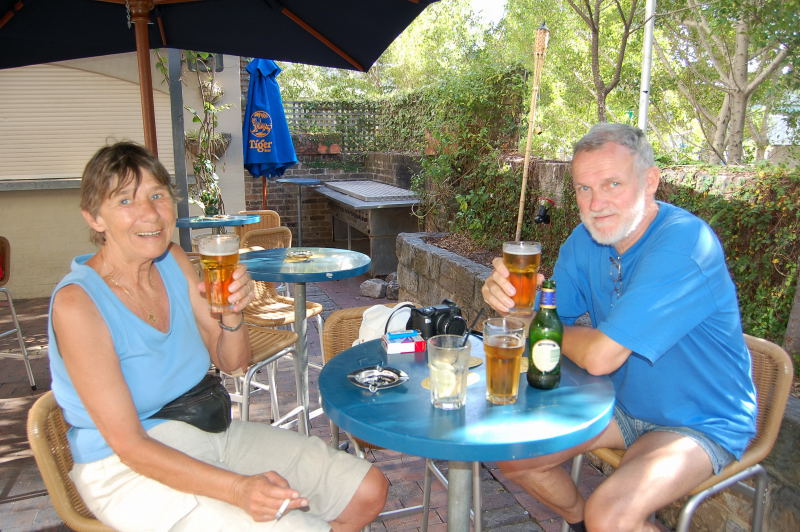13. March 2005 09:04
by Rene Pallesen
0 Comments
During the year I took a number of photos in Sydney. If you would like to know what the inner city of Sydney looks like then have a look at this photo collection.

Click here to see more photos from:
Sydney/
Slideshow
13. March 2005 08:57
by Rene Pallesen
0 Comments
In 2005 I managed to do a fair bit of climbing. Sarah and her boyfriend at that time were climbing almost every weekend and climbing with them definitely boosted my confidence and allowed me to increase the difficulty of the climbs I was able to tackle.
The photo below is a photo of me climbing at Centenial Glen.

Click here to see more photos from:
Climbing 2005/
Slideshow
13. March 2005 07:42
by Rene Pallesen
0 Comments
I went a trip to Calgary (as well as to Seattle) in the end of 2005. It was lots of meetings and in Calgary we were invited to provide input to our workflow product from the field.
While we were there they had the Chinook, which is a warm wind that appear during the winters...so during the day it was really pleasant.
One night we went to see a game of ice hockey against the Calgary Flames and Chicago...it was the only game that Calgary lost that season.

Click here to see more photos from:
Calgary 2005/
Slideshow
13. March 2005 07:33
by Rene Pallesen
0 Comments
At the end of 2005 my Mum and Dad escaped the winter in Denmark by travelling to Sydney for a couple of weeks.
They stayed here over Christmas and New Years Eve. While they were here we went for a drive up to Graemes house at Taylors Lake near Port Macquarie where we Christmas Eve cooking traditional danish Roast Duck, and Ris-a-la-mande.
New years even we celebrated at Graemes place at McMahons Point here in Sydney.
New Years day was the hottest on record...48 degrees.

Click here to see more photos from:
Christmas and New Years Eve 2005/
Slideshow
14. November 2004 12:59
by Rene Pallesen
0 Comments
14. November 2004 12:58
by Rene Pallesen
0 Comments
Normally Bedstemor's fest is for paid
by her children, but this year, all of Bestemor's grandchildren decided
to also treat the family in return. They chose the Italian restaurant
in the hotel. |
|
It was a 3-course set menu at US$8 per person.
For starters, it was thin minestrone with salad vegetables and grated
cheese.
For entrée, it was 3 pieces of ravioli with mushrooms and white
sauce (ravioli suprisingly had cinnamon in it...)
For mains, we had a choice of either chicken or veal scallope with
fettucine...
But all our meals were served with the same sauce and somehow we all
ended up getting french fries...
When we asked the waiters about the fettucine listed
on the menu, no-one had any idea...
And our surprise dessert was a scoop of ice-cream
swimming in fruit salad and syrup.
|
|
|
These breadsticks were really very
nice, although surprisingly these contained cumin, instead of Italian
herbs or cheese. |
|
With Bedstemor in the middle, the oldies
at one end, we sat at the other end with Kim, Rasmus and their respective
girlfriends. Rasmus and his g-friend told us about their trip around
Asia, toVienChan and Laos. Kim and Birit had spent 6 months backpacking
around India, Nepal and Thailand. |
|
In the meanwhile, there was an Egyptian
engagement party that started in the hotel lobby. The musicians stood
around the couple, playing oboe-like instruments, tambourines and drums,
whilst the guests clapped and danced to the music. It was deafening,
the sound echoing throughout the hotel. They eventually made their way
up to one of the function rooms to party all night long. |
=
14. November 2004 12:54
by Rene Pallesen
0 Comments
Our first sightseeing trip after arriving in Egypt
was the Citadel and the Mohammed Ali Mosque. The Citadel was once
the home of the royal family until 1870, then the military took over
this joint until the 1970s. It is still used occasionally by the military
but mostly opened to visitors although certain sections are closed
off to them.
Neither did our guide tell us much about the Citadel,
nor give us the opportunity to explore. So most of the photos here
are of the Mohammed Ali Mosque sitting on the Citadel.
|
|
|
The mosque is famous for its alabaster corridors,
columns and floors. Alabaster is a cheaper form of marble that seems
to be slightly more porous and does not have the smoothness or coolness
of normal marble.
|
|
Adam, our guide sat everyone down in one corner of
the mosque like school kids, and gave everyone some sort of history
lesson about Islam and marriage.
|
|
The interior of the mosque was magnificent, with globes
of light hanging in multiple rings from the ceiling. In the far right
corner, there is a gilded green and gold staircase that leads to some
sort of pulpit.
Local women were allowed into this mosque, but clad from head to foot.
Female tourists were provided with a green abaayas if they
were sleeveless or wearing shorts.
|
|
During Adam's chat about Islam and its history, René
asked for more information about the Citadel, and was rudely scolded
for not listening.
Adam did not give any more information about the Citadel for the rest
of the trip...
|
|
Left: In another corner of the mosque was an
enclosure containing the marble sarcophagi and burial place of the
mosque's namesake - Mohammed Ali.
Right: The ceiling was also quite beautiful, but I could not
use the camera flash and it was a little dark. In each "corner"
of the dome were large arabic inscriptions in gold
|
|
Cairo has a brown haze over the city. The buildings
are made of mud bricks.
Dirty-white and grey are the only other colours one can see.
|
|
Apparently there is a number 7 written above one of
the doors of the Citadel. History says Napoleon and his troops numbered
each of the entrances around the Citadel as he could not understand
the local language.
|
14. November 2004 12:53
by Rene Pallesen
0 Comments
Khefren, Khafre's son, did not
seem to have the same desire to outbuild his father.
|
|
His pyramid is not as tall as Khafre's
pyramid, but looks so because it stands on higher ground. |
|
Each of these blocks of granite came
to about shoulder height on the average man
- they were about one cubic metre each in size. |
|
The few people who tried to climb up
the pyramid were called down by security guards patrolling the area.
We noticed the granite blocks further up the pyramid seemed smaller.
The quality of the workmanship worsened as the pyramids neared completion
and smaller blocks were used. |
|
Just imagine - these pyramids would
have once glinted in the sunlight like diamonds in the desert. Kefren's
pyramid was once covered with a smooth and shiny layer of limestone.
Unfortunately, most of the limestone has been stripped off, used in
mosques and palaces. Only a small portion remains at the tip of Khefren's
pyramid. |
14. November 2004 12:45
by Rene Pallesen
0 Comments
We did not have a lot of opportunities to explore
the city of Cairo. Our hotel was located on the other side of the
Nile from downtown Cairo, so there was not a lot happening.
|
|
In Cairo, we noticed a lot of large carcasses hanging
along the streets outside the butcher shops. Most of the shops and
restaurants were closed due to Ramadan, but Sunday heralded the last
day of Ramadan, so many were preparing for the final feast.
|
|
We tried in vain to find a restaurant for the family
to eat dinner, but no such luck. However, we did try to stop for some
beers at a small café along the Nile - no beers because it
was still Ramadan till that night, so we settled for some softdrink
and hot potato chips.
|
|
The city of Cairo looks hazy and grey, with all the
buildings a muddy colour.
It was nice to sit by the Nile.
|
|
The view from our Hotel Pyramisa at sundown.
|
14. November 2004 11:13
by Rene Pallesen
0 Comments